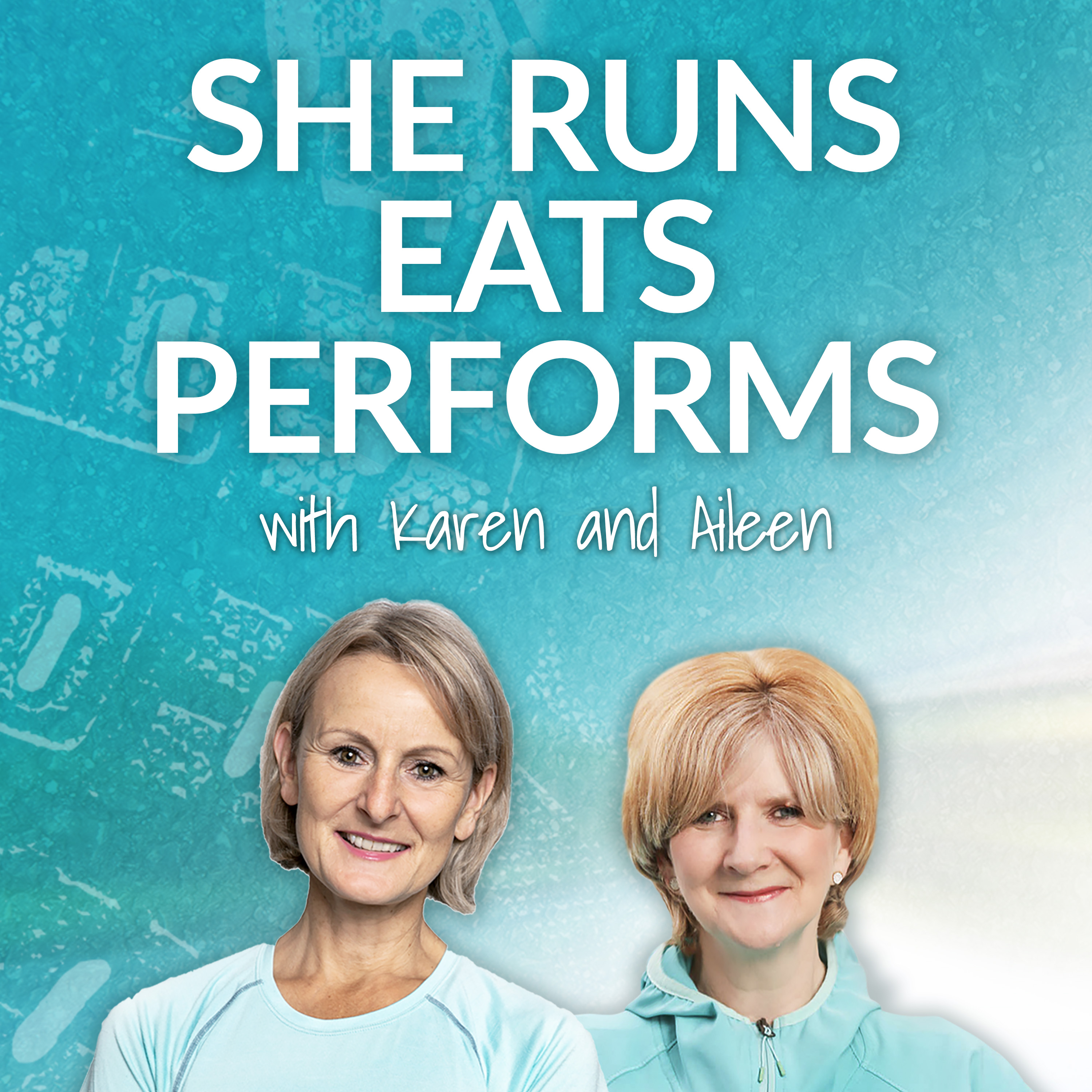Protein Powders...Do Runners Need Them?
Protein Powders….Do Runners Need Them?
Protein Powders (PP) are widely marketed at runners (and other athletes). The adverts can be enticing ….but do runners really need them? Here we discuss the benefits and potential drawbacks of Protein Powders before delving into how to make the best choices if indeed your personal circumstances suggest you may benefit from taking one. We round up by giving you some Protein Powder recommendations; ones that have been tried and tested by us and our clients!
Show Notes
(06:21)
The current recommended daily intake of protein for individuals varies:
For sedentary individuals 0.83g/Kg BW/d is recommended
For active individuals, the intake ranges from 1.2g/Kg BW/d to 2.0g/Kg
2g/Kg tends to be reserved for individuals focusing on strength/resistance training,
(07:51)
There are many potential benefits from taking a protein powder including:
- Body composition as protein helps keep you fuller for longer. Also metabolism of protein uses significant energy, thus burning more calories per hour than CHO.
- Building muscle because distance running is catabolic ie it leads to muscle breakdown. A PP would be an easy way to increase protein intake in order to maintain and build muscle mass.
- Glucose/insulin regulation as protein promotes insulin secretion, which can help enhance glucose clearance from the blood, thus promoting Blood Sugar Balance.
- Adequate protein intake for individuals who struggle to attain an appropriate protein intake CONSISTENTLY
- High protein content in one serving so great as a recovery strategy to help maintain muscle mass
- Pure protein so there is no Fat or Carbohydrate present to interfere with efficient digestion/absorption
(16:05)
There are also potential drawbacks to taking a protein powder including:
- Branched chain amino acids (BCAAs) may compete with Tryptophan at the blood brain barrier, which could affect mood and sleep
- PP overuse may lead to an overall excess protein intake. This could lead to the formation of toxic metabolites including ammonia, which is thought to be a risk factor for compromised immunity, dysbiosis and other systemic and metabolic conditions.
- Compromised kidney function. An overall high dietary protein intake is thought to cause increased renal pressure, which may result in kidney hyperfiltration, glomerular injury, and proteinuria, proteinuria being a marker of kidney dysfunction and glomerular injury.
- Compromised liver function. The liver is the main organ responsible for filtering relatively toxic end products of protein metabolism (e.g. ammonia) via the urea cycle. When ammonia is not successfully removed from the blood due to impaired liver function or an overwhelmed detoxification process (maybe due to excess protein intake) the plasma ammonia concentration increases, which is known to cause negative health effects.
- Potentially debilitating side effects. These side effects include:
- Flatulence and/or bloating
- Cramps
- Tiredness
- Weakness
- Headaches
(26:17)
Particular runners who may benefit from a protein powder include:
- Runners who are vegetarian or vegan
- Runners recovering from injury
- Runners recovering from illness
- Runners wanting to lose weight
- Runners looking for a quick and easy pre or post-exercise snack
- Older runners where muscle loss is greater
(29:46)
It has been established that PP could be used strategically for certain individuals on certain occasions for a limited period of time. So, for these individuals there are certain things they would want to be considering when choosing a PP. These include:
- The source; dairy, egg or plant-based
- The form; Concentrate, Isolate, Hydrolysate:
Protein concentrates: Produced by extracting protein from whole food using heat and acid or enzymes. These typically supply 60–80% protein, with the remaining 20–40% composed of fat and carbs.
Protein isolates: An additional filtering process removes more fat and carbs, further concentrating the protein. Protein isolate powders contain about 90–95% protein.
Protein hydrolysates: Produced by further heating with acid or enzymes — which breaks the bonds between amino acids — hydrolysates are absorbed more quickly by your body and muscles
(32:09)
Here is a short review of 3 different Protein Powder sources:
Whey Protein
- Comes from milk.
- High in protein
- Also contains: lactose
- Isolate form contains very little lactose
- Rich in branched-chain amino acids (BCAA)
Pea Protein
- Especially popular among vegetarians, vegans and people with allergies or sensitivities to dairy or eggs.
- Generally made from the yellow split pea, a high-fiber legume that boasts most essential amino acids.
- Particularly rich in BCAAs.
Soy Protein
- Classed as a high-quality protein
- Contains all EAA, however in lower quantities than Whey on a per g basis
- Contains phytates, which interferes with trypsin, which in turn interferes with peptide (protein) digestion
- May support hormone balance in females
- BUT soy protein powders in the isolate or concentrate form have shown a higher risk of oestrogen linked cancers,
- Soy foods are recommended, not the PP.
(38:52)
Other considerations to take into account when choosing a Protein Powder:
- Effectiveness – Think about your reasons for taking one. What results are you looking for? Eg. Optimal protein intake, efficient recovery from training, enhanced performance
- Taste – It is always good to trial different brands until you find your preferred one. Remember they come in many different flavours but you could choose a natural one and flavour it yourself. TIP: Trial individual sample sachets before purchasing large packs.
- Quality – consuming a protein with a high biological value to ensure adequate amounts of EAAs – dairy based PPs contain the highest amounts of EAAs compared to plant-based options. They are typically lower in at least one EAA.
- Ingredients –Always read the label before purchasing to ensure the ingredients are natural. Look out for bulking agents, chalks and sweeteners including artificial sweeteners – AVOID THEM.
- Choose ones containing the FULL complement of Essential Amino Acids not just the BCAAs
- Be mindful of allergies/sensitivities – If you have any sensitivity/allergy to dairy proteins omit whey protein
Side Note: Remember to drink sufficient fluids when taking protein supplements, as the body requires water to break down and metabolise protein.
(45:20)
FEMALE FACTORS:
- Soy PP may lead to an increased risk of developing an oestrogen-driven cancer and this is because the soy is in the isolated form rather than food state form. Food state soy has not shown an increased risk of cancers, therefore we would recommend soy foods instead e.g. edamame beans, tofu, tempeh, seitan.
- It is thought that a chronic low protein intake could lead to menstrual disorders, especially in female athletes, so some female athletes may require a PP for a period of time as a preventative measure.
- The mid-life female runner may require additional protein in the form of a PP due to increased muscle loss as we age. This would be the same for ageing males too.
(50:46)
Some Protein Powder Recommendations:
- Motion Nutrition – Whey and vegan options
- Sunwarrior – Raw and vegan
- Pulsin – Whey and vegan options
- Purple Balance – vegetarian and vegan only
- Indigo nutrition – vegan only
- The Organic Protein Company – Whey only
- Creative Nature - raw and vegan
- Purition - vegan and whey options
(56:00)
Protein powders are really versatile and can be used in so many different ways. Here are some ideas for you to try:
Breakfast –
Smoothie: mix with 200ml-300ml a milk alternative eg. almond milk (but you could use dairy milk if necessary) and add various fruits and vegetables depending on your preference
Add them to cereals, oats, porridge
Snack –
As a shake pre or post training Consider adding a banana (or other fruit) for some carbohydrate if required especially post training to enhance MPS.
Meals –
Add a non flavoured one to a savoury dish eg. soups, stews and casseroles.
Bedtime –
As a bedtime snack - maybe mix in some casein (the other form of milk protein) because it is thought to support sleep and improve muscle repair overnight.
BUT remember food comes first:
- Fish
- Poultry,
- Eggs
- Quality red meat
- Legumes
- Nuts and seeds
- Grains
(1:02:33)
KEY TAKEAWAYS:
- It is important to remember that if you are eating a wide and varied diet containing natural and healthy protein sources on a DAILY basis, then supplemental protein is not necessary.
- The World Health Organisation (WHO) currently recommends 0.83g/Kg BW/d of protein for sedentary individuals
- BUT the ACSM (American College of Sports Medicine) and other nutrition/sporting bodies recommend an increased intake for active individuals. The intake ranges from 1.2g/Kg BW/d to 2.0g/Kg…depending on what type and how much exercise is being completed.
- There are many benefits to consuming a PP including: supporting body composition, building muscle and increasing insulin sensitivity.
- BUT there are also drawbacks to consuming some irritating side effects e.g. wind and bloating but also some more important factors including: potential compromised hormone production and renal/liver dysfunction.
- When choosing a PP there are several things to consider including: quality…which includes what ingredients they contain, also its effectiveness needs to be considered as well as taste…and of course price.
- Runners who may benefit from taking a PP for a period of time include: vegetarian or vegan runners, Runners recovering from injury or illness, Runners trying to lose weight and possibly older runners where muscle loss is greater.
- PP are very versatile and can be introduced at any time of the day and with any meal
- Finally, some FOOD FIRST ideas to consider include: fish poultry, eggs, quality red meat, legumes, grains, nuts and seeds.
Related Topics:
Energy Bars Gels and Protein Powders
Disclaimer:
The suggestions we make during this episode are for guidance and
advice only, and are not a substitute for medical advice or treatment.
If you have any concerns regarding your health, please contact
your healthcare professional for advice as soon as possible.
Aileen Smith and Karen Campbell met at as nutrition students (Institute for Optimum Nutrition, London) and became lifelong friends and nutritional buddies! Both have a love of running and a passion for nutrition, delicious food and healthy living.
Together they host RUNNERS HEALTH HUB. A place for like-minded runners who are looking for simple ways to support running performance, energy, endurance, and general great health.
We are excited to be able to share our expertise, experience and short cuts with you. We hope you'll join us again. If you'd like to know more about us and She Runs Eats Performs please check out our TRAILER.
If you're ready to make learn more about how you may introduce easy nutrition into your running and training plan join our Easy Nutrition For Healthy Runners Online Programme for short videos, recipes, downloads and LIVE training and Q&A.
As a THANK YOU to you as one of our valued listeners, we have a special offer for you use COUPON CODE POD to get 33% discount off the full price which brings the price to £199.
If you’d like help from Karen and Aileen to design a personalised sports nutrition plan for your running - please contact them at hello@runnershealthhub.com
Happy Running!
Aileen and Karen
kSajd7H3VdSo0kI2B49n

